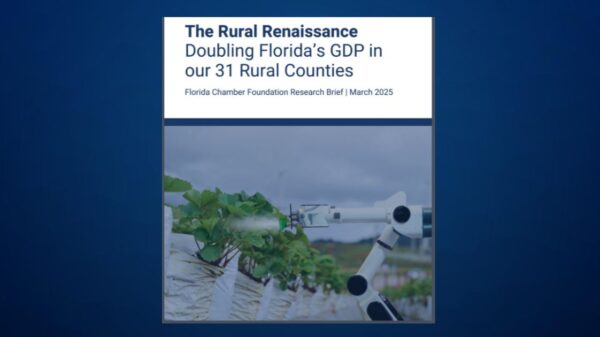At the end, the Florida Department of Agriculture and Consumer Services (FDACS) announced the eradication of the Oriental fruit fly, Bactrocera dorsalis, from Pinellas County.
In June, the Division of Plant Industry positively identified five Oriental fruit flies detected during routine trapping. A quarantine was established in the St. Petersburg area prohibiting the movement of fruit, vegetables and nuts without a compliance agreement from the department. As of September 23, 2022, the treatment of this area for Oriental fruit fly is complete, no additional detections have been made in three lifecycles of the fly therefore, Oriental fruit fly has been eradicated and the quarantine has been lifted.
“Oriental fruit flies have the ability to cause devastating losses to our food supply and producers, making quick eradication efforts vital,” said state Agriculture Commissioner Nikki Fried. “This is a testament of the dedication of our inspectors, researchers, and staff to safeguarding our agriculture industry. I could not be prouder of how quickly they identified and began treating the affected area in St. Petersburg to once more eradicate these pests from our state.”
The initial flies were discovered during routine trapping and additional flies were discovered during expanded trapping activities. State and federal agriculture inspectors monitor more than 56,000 fruit fly traps statewide as an early detection network against exotic fruit fly introductions that threaten Florida’s agricultural well-being.
This program highlights the importance of our world-class exotic pest surveillance system and the cutting-edge science we use to eradicate catastrophic plant pests like Oriental fruit fly,” said Division of Plant Industry Director, Dr. Trevor Smith. “Additionally, it showcases the significance of the collaboration of FDACS-DPI with our regulatory and academic partners.”
The Oriental fruit fly has been trapped several times in Florida since 1964 and each time has been successfully eradicated. This species is considered one of the most serious of the world’s fruit fly pests due to its potential economic harm. It feeds on more than 436 different fruits, vegetables and nuts, including fig, loquat, mango, orange, peach, plum, sapote, soursop, Surinam cherry, tangerine, tropical almond and guava. The fruit flies lay their eggs in host fruits and vegetables. In a few days, the eggs hatch and maggots render the fruits or vegetables inedible.
Along with increased trap monitoring, treatments were conducted in a 1.5-square-mile area around the fly detections. The treatments consisted of male annihilation technique (MAT), foliar spot treatment, soil drench treatment and fruit removal. MAT treatment uses a bait and insecticide mixture, killing the flies when they feed on the bait. Treatments were applied for a period of two life cycles of the fly (approximately 60 days) past the date of the last detection. Foliar spot treatment uses Spinosad, an insecticide derived from naturally occurring soil organisms and commonly used by organic growers, to spot treat host trees in the area. Soil drench is used on the soil under host trees with fruit known or suspected to be infested with larvae, pupae or a mated female fruit fly. Fruit removal is necessary when larvae is found in infested fruits or vegetables. Fruit from host trees is removed, placed in double bags and properly disposed so flies have no host material to lay eggs.
FDACS-DPI will continue to safeguard Florida’s agriculture and natural resources by monitoring for invasive pests and disease.






















